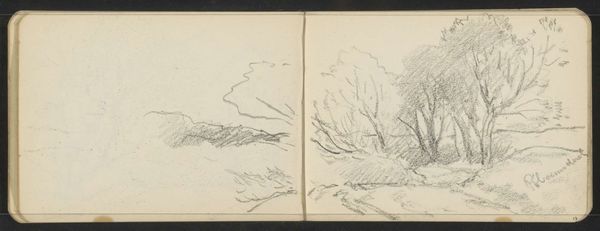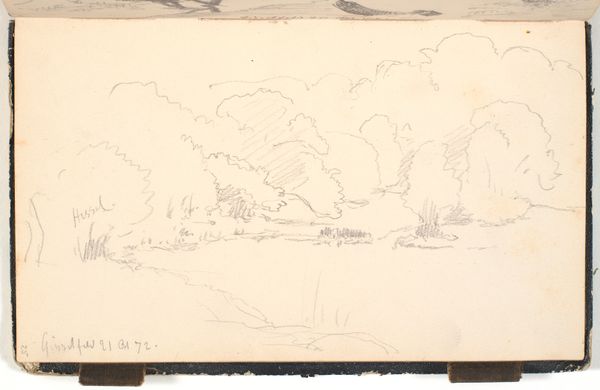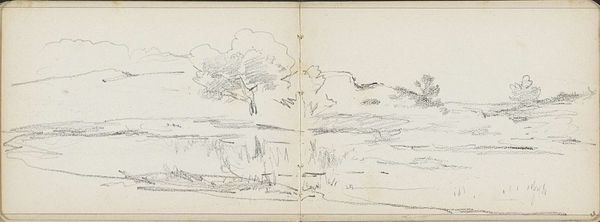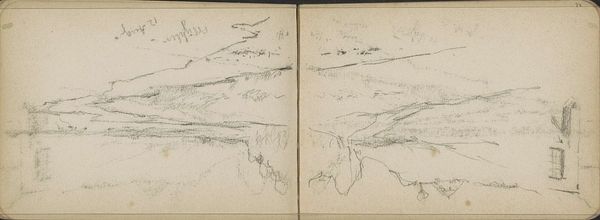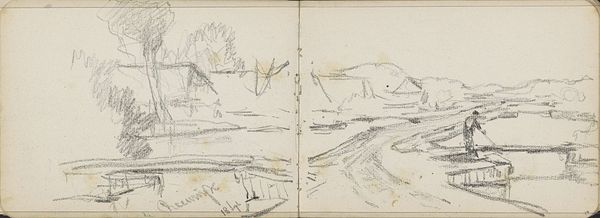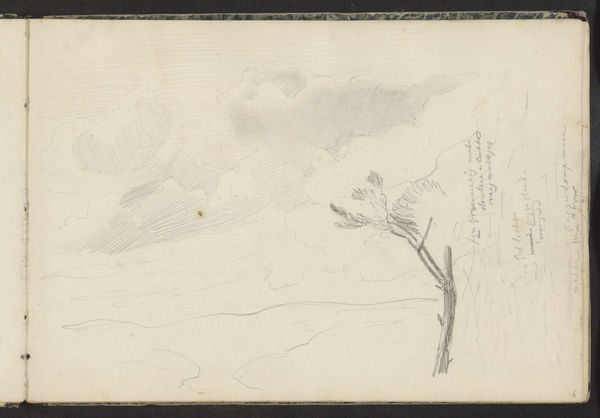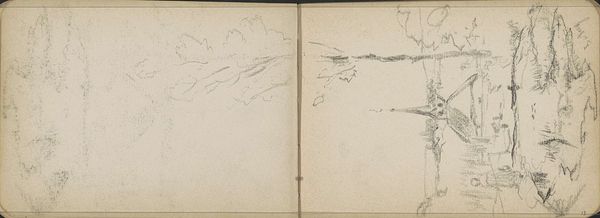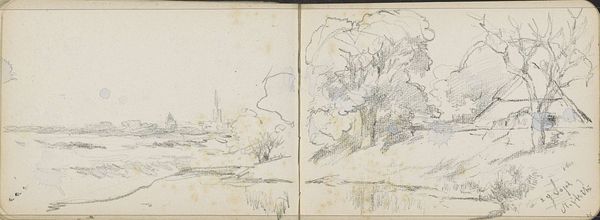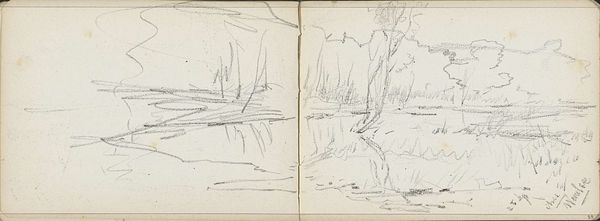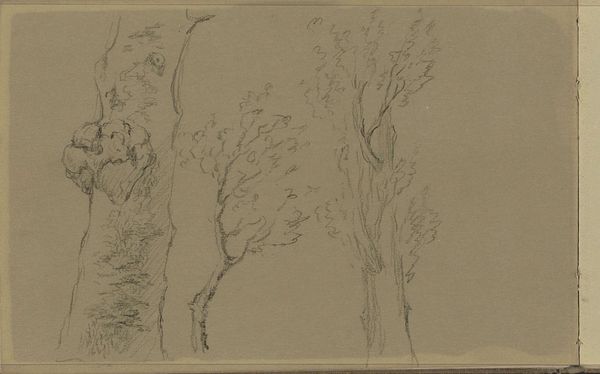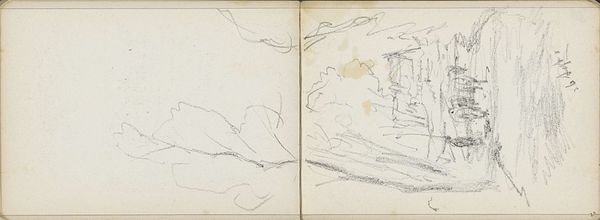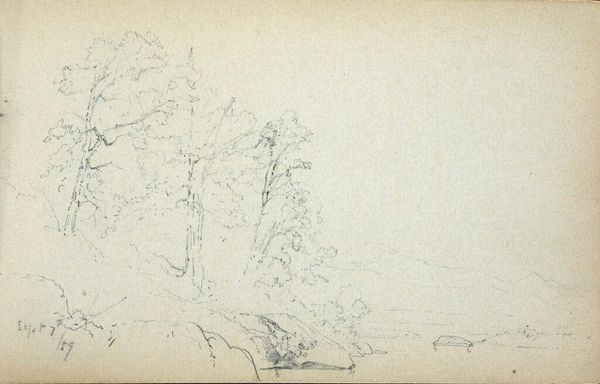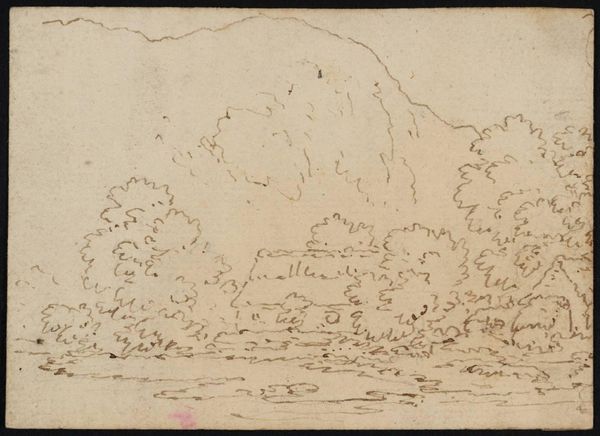
Copyright: Rijks Museum: Open Domain
Editor: Here we have "View from the Ruins of Brederode" created in 1868 by Johannes Tavenraat. It’s a delicate pencil drawing in the Romantic style. It’s quite minimal, but the landscape is still somewhat legible. What do you see in this piece from your perspective? Curator: I see a deliberate act of documentation, shaped by available materials and the artist's labor. Look at the paper – it's from a sketchbook, implying travel, immediacy, and perhaps artistic training. Tavenraat used a humble pencil. This choice, a common, easily accessible tool, democratizes artmaking itself. Editor: So, the accessibility of the materials matters? Curator: Absolutely. Pencils allowed artists to move beyond traditional patronage and studios. They became portable, aligning with Romanticism’s focus on direct experience with nature. We have to consider that pencil production underwent industrialization during this period; a commentary on the relationship between nature and manufacturing can also be interpreted in this piece. This landscape becomes mediated through commercial tools. Editor: That’s fascinating. I never thought about the pencil itself being a manufactured object with a cultural context. How do the Ruins factor into it all? Curator: The ruins themselves represent a breakdown of previous material conditions. Feudalism and its structures of power had diminished by the nineteenth century. By portraying nature reclaiming old material remains, he may be commenting on labor, power and industrial manufacturing’s intrusion into these domains. Editor: This has changed how I see landscape art. I thought it was all about idealized nature, but you’ve shown it can also reflect the realities of material production and societal change. Thanks for the new insight! Curator: Precisely! It pushes us to examine art not just as representation, but also as a record of making, and its connection to societal power.
Comments
No comments
Be the first to comment and join the conversation on the ultimate creative platform.

